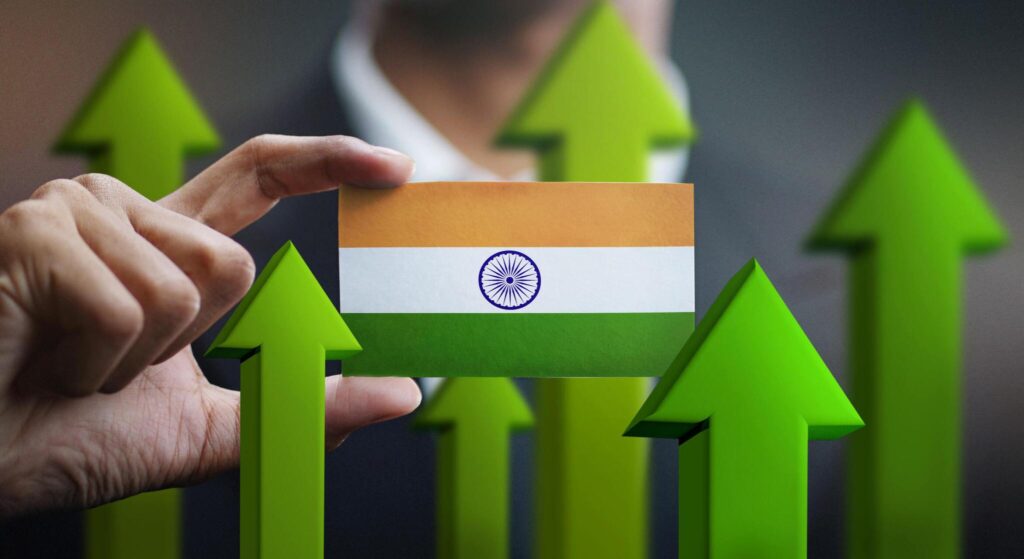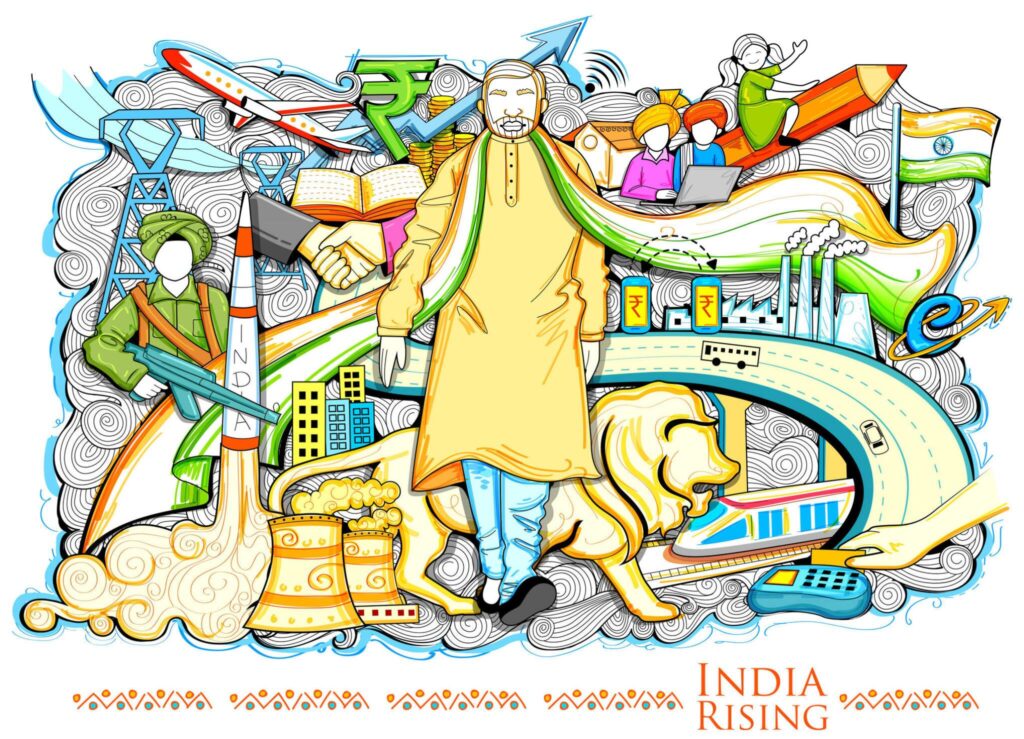
India, a land of vibrant colors, diverse cultures, and immense potential, stands poised at a pivotal juncture. With its burgeoning young population, rising middle class, and strategic geographic location, the nation harbors ambitions of becoming a global economic powerhouse. But how does it plan to achieve this ambitious goal? Enter India’s Economic Vision for 2030 – a comprehensive roadmap for sustainable and inclusive growth.
Building on a Strong Foundation:
India’s economic journey has been marked by remarkable strides. Over the past few decades, the country has witnessed consistent GDP growth, burgeoning foreign direct investment, and a burgeoning tech sector. In 2023, India’s GDP stood at around $3.5 trillion, making it the fifth largest economy in the world. By 2030, it’s projected to reach a staggering $7.3 trillion, potentially catapulting it to the third spot, surpassing Japan and Germany.
Key Pillars of the Vision:
The Economic Vision for 2030 rests on five key pillars:
1. Infrastructure Development:
India recognizes the critical role of robust infrastructure in facilitating economic activity. The government is investing heavily in modernizing roads, railways, ports, and airports to create a seamless network connecting people and goods. Additionally, initiatives like the Sagarmala Project and the Dedicated Freight Corridors aim to boost maritime and inland waterways transportation.
2. Manufacturing Prowess:
India aspires to become a global manufacturing hub. Initiatives like “Make in India” and “Production Linked Incentives” are attracting foreign investments and boosting domestic manufacturing in sectors like electronics, automobiles, and pharmaceuticals. This will not only create jobs but also reduce dependence on imports and boost exports.
3. Technological Transformation:
The digital revolution is sweeping across India, transforming various sectors. The government’s focus on initiatives like Digital India and Startup India aims to leverage technology to improve governance, delivery of services, and foster innovation. India’s burgeoning tech sector, with unicorns like Flipkart and Paytm, is also poised to drive growth.

4. Inclusive Growth and Sustainability:
India’s economic vision recognizes the importance of ensuring that the fruits of growth reach all sections of society. Schemes like the Pradhan Mantri Jan Dhan Yojana and Ayushman Bharat aim to provide financial inclusion and access to healthcare for the underserved. Additionally, the focus on renewable energy and climate-friendly initiatives ensures sustainable development.
5. Skilling and Education:
A skilled workforce is crucial for sustaining economic growth. The government is investing heavily in skill development programs and vocational training to equip the youth with the necessary skills to meet the demands of the evolving job market. Additionally, emphasis on quality education will create a future generation of skilled professionals capable of driving innovation and entrepreneurship.
Challenges and Opportunities:
India’s economic journey is not without its challenges. Infrastructure bottlenecks, bureaucratic hurdles, skill gaps, and income inequality remain key concerns. However, the nation’s demographic dividend, rising disposable incomes, and increasing political stability present immense opportunities.
The Road Ahead:
India’s Economic Vision for 2030 is a bold and ambitious roadmap, but achieving it requires sustained commitment and collaborative efforts. By effectively addressing the challenges and capitalizing on the opportunities, India can unlock its true economic potential and emerge as a global leader.
Data and Statistics:
- India’s GDP is projected to grow at 7% in 2026-27, making it the fastest-growing major economy in the next three years (S&P Global).
- India’s foreign direct investment (FDI) reached a record high of $83.5 billion in 2022-23.
- India’s mobile internet users are expected to reach 850 million by 2025.
- India’s renewable energy capacity is expected to reach 500 GW by 2030.
- India’s literacy rate has increased from 64.8% in 2001 to 77.7% in 2021.
Conclusion:
India’s Economic Vision for 2030 is not just an economic blueprint; it’s a vision for a brighter future. By focusing on infrastructure, manufacturing, technology, inclusivity, and skill development, India can build a thriving economy that benefits all its citizens. The journey will be challenging, but with unwavering commitment and collective effort, India can transform its ambitious vision into a glorious reality.



